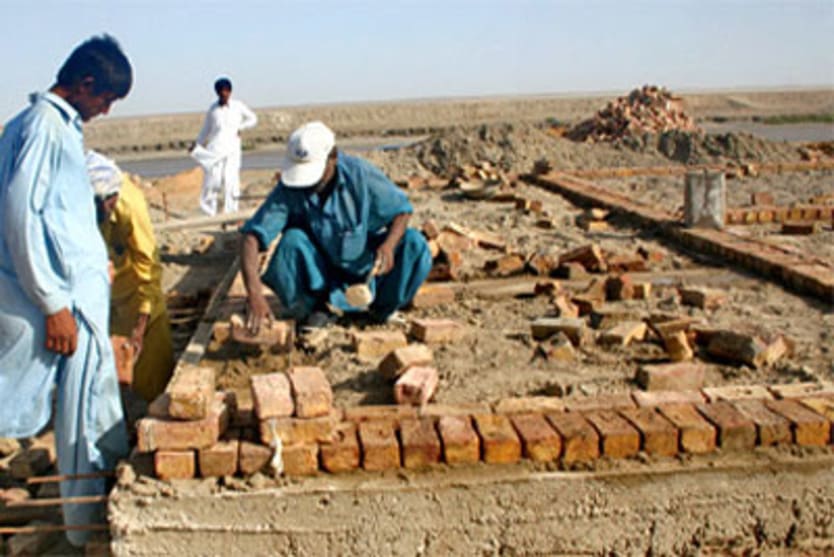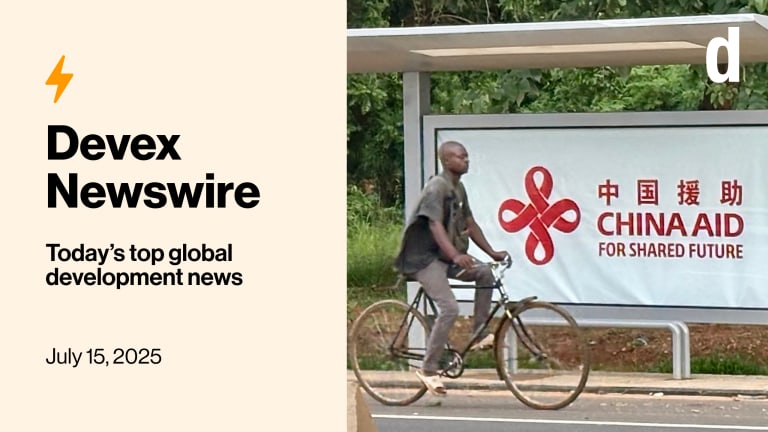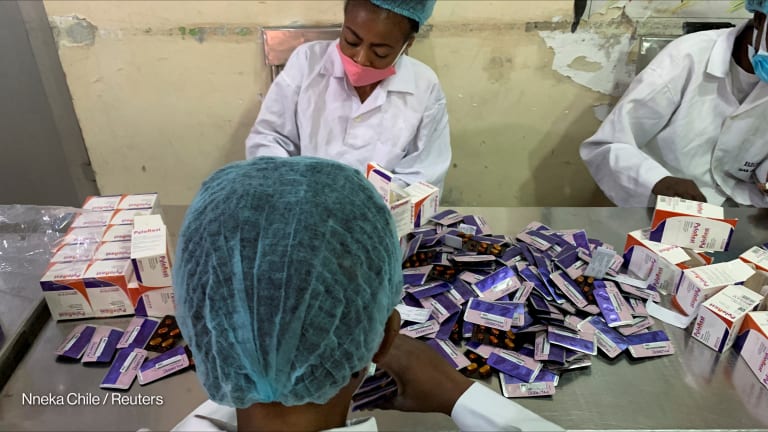
If the wily hydra that is the present-day global terror network has a heart, it is in Pakistan’s tribal areas.
The region not only hosts al-Qaida’s main operational safe house, but also shelters the leadership of the Afghan Taliban, the up-and-coming Pakistani Taliban and a grab bag of other deadly militant groups. In June 2008, in fact, the Taliban surrounded Peshawar, the regional capital, and began a methodical usurpation of local power.
That’s precisely why the United States’ $750 million FATA development program is so crucial. Aligned with Pakistan’s $2.3 billion long-term aid package for the region, the program represents a softer, less militant approach to combating terror in the Pakistani hinterlands. It may also be a sign of desperation.
“It’s our last chance,” Arbab Alamgir Khan Khalil, a member of the National Assembly from Peshawar, recently told the Center for American Progress. “If we fail this time, the mullahs are going to take over.”
A look at FATA
Nestled against the Afghanistan border in Pakistan’s rugged northwest, FATA is the most underdeveloped region of the country.
Its population of 3.5 million is scattered across some 3,000 villages in an area slightly smaller than Massachusetts. Literacy rates are estimated at 3 percent for women, 17 percent overall, and infant mortality is 135 out of 1,000 births - far worse than national averages.
There is very little industry and little hope - which is where the new U.S. development program comes in. Through a series of projects installed over five years, it seeks to improve education, build hundreds of miles of roads, and boost the economy across all of FATA’s seven tribal agencies and six frontier regions.
The real goal is more abstract.
“The principal thing is to build trust,” a U.S. State Department official said of the program at an Islamabad press conference in late April.
Economic stagnation, political isolation, an archaic system of justice and a centuries-old tribal code among FATA’s predominantly Pashtun peoples have fostered considerable disenchantment with Islamabad. This has encouraged openness to the advances of radicals and terror outfits. In early May, Pakistan Prime Minister Yousaf Raza Gillani said his government seeks to “integrate these areas into society.”
Good intentions gone bad?
Security is the most prominent of several key concerns analysts have voiced since the program was announced in mid-2007. Essentially lawless to begin with, the region has become downright unruly with the rise of the Pakistani Taliban and the regeneration of al-Qaida in the past few years.
The Pakistani military has suffered hundreds of casualties attempting to subdue the area. Infiltration from Afghanistan has spiked in recent months, particularly in Bajaur Agency. No U.S. official has visited for more than a year because of safety concerns. Pakistan’s ambassador to Afghanistan, Tariq Azizuddin, was kidnapped in Khyber Agency in February and held for more than three months, reportedly by the Pakistani Taliban. And in June, the Taliban surrounded Peshawar and began to attack civilians randomly, take over courthouses and enforce their own form of law.
“Who’s going to take the aid there?” wondered Ayesha Siddiqa, author of “Military Inc.: Inside Pakistan’s Military Economy” and a leading voice on Pakistani security affairs. “[The U.S. Agency for International Development] has been begging but American companies aren’t willing to go in.”
The U.S. State Department had to curb plans to send officials and consultants to the tribal areas to consult with local leaders.
“How do you do that when it’s difficult to be on the ground, you’re not welcome and you can’t even say it’s American money going in there?” wondered Caroline Wadhams, senior policy analyst for national security at the Center for American Progress, a think tank based in Washington, D.C.
A member of Pakistan’s National Assembly from Bajaur Agency underscored the locals’ unwelcoming stance.
“The tribal areas are a part of Pakistan, and we can sort out the problems among ourselves,” said Syed Akhunzada Chitan in an April interview with a Pakistani daily. “They cannot be settled by the outsiders; we know about our problems and their solutions much better than the others.”
Chitan is a member of the Pakistan People’s Party and may be in line for a ministerial post.
Wadhams has written extensively about the region and believes that because of widespread corruption and high levels of insecurity, delivering aid will be a very delicate operation.
“How you implement this is very problematic,” she said about U.S. development plans for the region.
According to those plans, much of the aid will be delivered this way: Pakistani government officials called political agents will visit and consult with local villages to assess needs. They will relay this information to a local or foreign contractor, who will implement projects within the identified village under the “supervision” of the political agent. Thus, the aid appears to be coming from the government of Pakistan.
“There are a bunch of problems with that plan,” said Wadhams, explaining that the political agents are believed to be very corrupt and that many were discredited in recent years.
Chitan concurred.
“These funds are not for the tribal people, but for political agents,” he said. “Mostly, such funds are spent on purchasing expensive luxury vehicles for government officers.”
The United States may thus be reinforcing an outdated governance structure that puts far too much power into the hands of ethically questionable agents.
Limited potential
Still, there are signs of hope. Due to the high levels of corruption within the national and provincial governments, one USAID project aims to monitor aid delivery across the FATA aid program. The U.S. State Department has been tight-lipped about how that project will work, and USAID refused repeated interview requests for this article.
Further, the political agents will not be buying luxury vehicles, according to Rick Barton, senior adviser on international security at the Center for Strategic and International Studies in Washington, D.C. Barton worked for USAID in the 1990s and pointed out that the FATA aid program will involve local communities and often work with local contractors. Political agents will get political credit but never handle any money.
“That seems a perfect awareness of the political sensitivity and yet avoidance of possible weak spots,” he said. “That’s a pretty good scenario.”
Many partnerships will be with foreign contractors, if USAID’s website of the program is to be believed. DAI is already working to improve the efficacy of FATA governmental institutions. The American Institutes for Research is training nearly 8,500 teachers as part of a $68 million education initiative. Associates in Development is working on school rehabilitation and reconstruction, while Abt Associates and John Snow Inc. are executing health programs. All of which means overhead and consulting expenditures of up to 40 percent, even 50 percent of the total project cost. The international community’s involvement will be difficult to hide from Pakistanis.
“People have a sense that it’s American money,” said Wadhams, referring to the residents of FATA.
She worried that foreigners - often seen as out to convert locals - would become targets.
“Americans are so despised there you just can’t put any kind of label on anything you’re doing,” Wadhams said.
Such labels may attract the wrong attention.
“If the Taliban allow these companies to come in and develop the region, they lose control,” said Siddiqa. “They won’t let that happen.”
If, on the other hand, development initiatives are initiated by the community, Taliban or other groups seeking to gain power will “lose the whole town,” Barton said, adding that he saw promising signs during a mid-April visit to Pakistan.
“Initial projects are definitely doing that,” he said. “They’re leaving the decision-making to locals, and that’s a huge benefit in the design.”
What needs to be done
Analysts were in agreement on the program’s most glaring shortcoming.
“The U.S. should be pressuring the Pakistani government to do greater political and judicial reforms,” said Wadhams.
In FATA, people are barred from forming political organizations, and an outdated form of justice called the frontier crimes regulations, which includes collective punishment, remains in effect. Many tribal leaders have pushed for reform in these areas.
“A community cannot prosper in the absence of three things: basic democracy, social justice and education,” said Chitan. “Even if a community has everything except for the above three, it cannot progress.”
Wadhams supported a deeper, more long-term commitment, as envisioned in U.S. Sen. Joe Biden’s “democracy dividend” plan, which proposed $1.5 billion in nonmilitary aid over 10 years and an additional $1 billion if the government adheres to a series of democratic principles.
Barton believed integration should come first.
“The $750 million over five years won’t work at all unless there’s changes across the board, particularly political integration and judicial reform,” he said.
He added that the Awami National Party, the region’s most popular political party, recognizes the importance of political integration.
“People of the area want to feel safer, more secure, part of a larger whole,” Barton said.
An April report by the U.S. Government Accountability Office found that the United States “lacks a coherent plan for Pakistan.” Siddiqa said the same for the government in Islamabad.
“What is their plan?” she wondered. “We need a serious reversal on our policy on terrorism. Basically, stop looking at militancy as a tactical weapon.”
Parts of the Pakistani military back the Taliban and view them as assets to be deployed when necessary, Siddiqa said.
Signs suggest the new coalition government is committed to developing and integrating the area - a significant shift from the military regime of President Pervez Musharraf. In mid-May, Prime Minister Gillani’s government made several concessions during ceasefire negotiations with the Pakistani Taliban: The army cut troop levels in Waziristan, an exchange of prisoners was made, and courts in the tribal regions were authorized to consider judicial advice from Islamic scholars.








